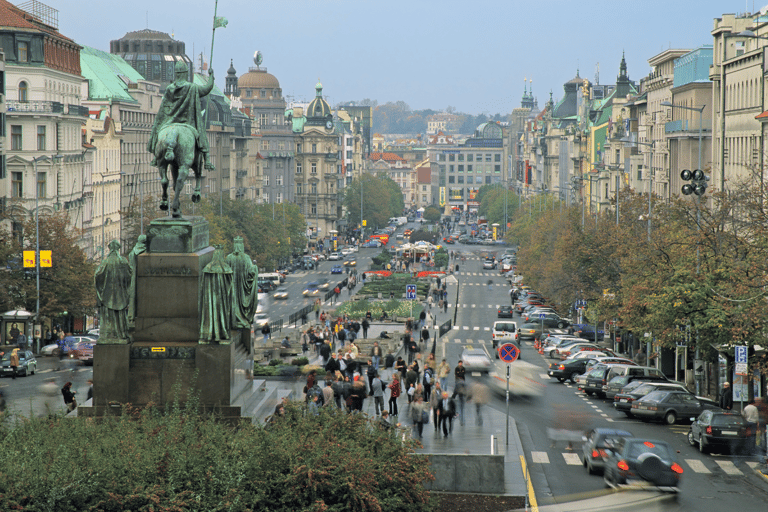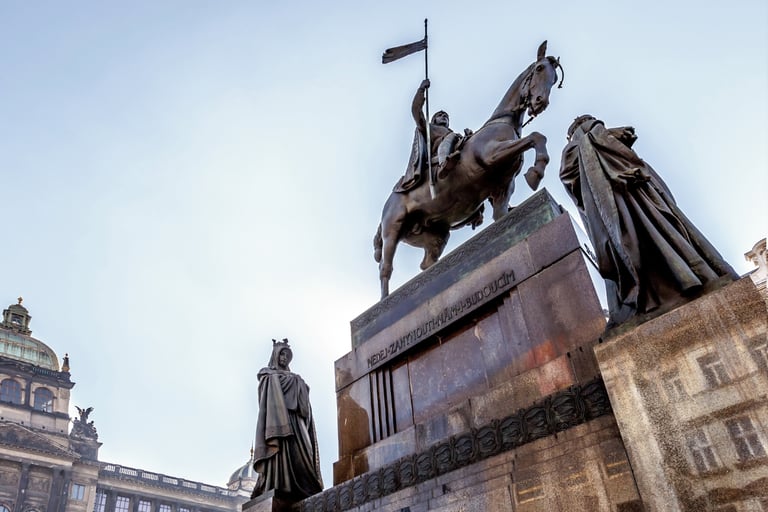Wenceslas Square
Prague's Living History
8/11/20251 min read
Wenceslas Square isn’t really a square — it’s a long, grand boulevard that has witnessed more history than most entire cities. Named after Saint Wenceslas, the patron saint of Bohemia, it’s been the stage for royal celebrations, revolutionary protests, and everyday city life for over 700 years.
At its upper end stands the impressive National Museum, and in front of it the iconic equestrian statue of Saint Wenceslas. This bronze sculpture, created by Josef Václav Myslbek and completed in 1912, shows the patron saint as a proud and steadfast ruler, his horse poised as if ready to lead the Czech people forward. Surrounding him are statues of other Czech patron saints — Ludmila, Agnes of Bohemia, Procopius, and Adalbert — creating a symbolic guard over the city.
The square’s elegant facades blend Art Nouveau, functionalist, and modern styles, telling a story of changing times. It is also the heartbeat of modern Prague — lined with shops, restaurants, hotels, and buzzing with locals and visitors alike. But it’s the memory of great historical moments that lingers most strongly: from the birth of Czechoslovakia in 1918 to the Velvet Revolution of 1989, when crowds gathered to peacefully demand freedom.
Today, whether you come for shopping, a coffee, or to stand where history was made beneath the gaze of Saint Wenceslas, this boulevard invites you to see Prague not only as a beautiful city, but as a place where people have shaped the course of nations.








contact us
send us e-maıl
info@pagusatravel.com
+420-739-628-000
LEGAL
Terms and conditions
Cancellation policy
COMPANY
Zlin, Czech Republic
All tours and travel packages are designed by PAGUSA s.r.o. and organized by Czechaway s.r.o., a licensed Czech travel agency holding valid insolvency insurance in accordance with Czech law.
PAGUSA s.r.o.
IČO 221 96 480


